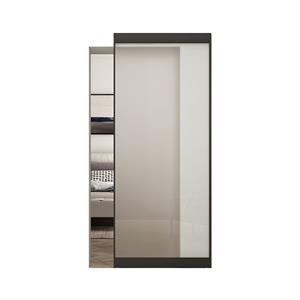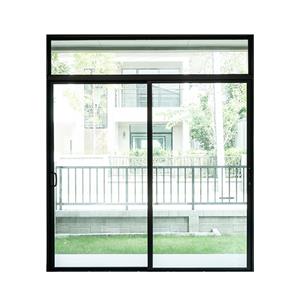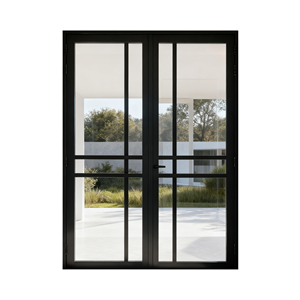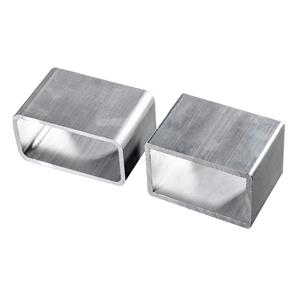Are black aluminum windows more expensive than white?
The surge in modern architectural trends has elevated black anodized aluminum windows to iconic status. As a premier aluminum door and window manufacturer, we're consistently asked: "Is the premium look of black anodized aluminum windows reflected in a significantly higher price compared to classic white aluminum windows or versatile grey aluminum windows?" The direct answer is typically yes. However, the reasons behind this cost differential and the long-term value proposition are multifaceted. Understanding the nuances between black anodized aluminum windows, white aluminum windows, and grey aluminum windows is crucial for making an informed investment.
I. Unpacking the Price Structure: Why Black Anodized Aluminum Windows Command a Premium
The price difference between black anodized aluminum windows, white aluminum windows, and grey aluminum windows stems from distinct manufacturing processes, material requirements, and performance considerations:
The Finish Technology & Complexity:
Anodizing vs. Powder Coating: Black anodized aluminum windows undergo an electrochemical anodizing process, creating a hard, integral oxide layer. This is fundamentally different and often more complex than the powder coating used for most white aluminum windows and grey aluminum windows. Anodizing offers superior metallurgical bonding and exceptional durability but requires precise process control.
Pigmentation Challenges: Achieving a deep, uniform, fade-resistant black via anodizing demands high-purity alloys and stringent bath chemistry control. While white aluminum windows and grey aluminum windows primarily rely on consistent powder application, the anodizing process for black is less forgiving, impacting yield and cost.
Quality Control Rigor: Imperfections like slight color variation or micro-scratches are far more noticeable on the sleek surface of black anodized aluminum windows than on white aluminum windows or even grey aluminum windows. This necessitates exceptionally strict quality control throughout production and handling, increasing costs.
Thermal Dynamics & Engineering:
Heat Absorption: Black anodized aluminum windows absorb significantly more solar radiation than white aluminum windows (which reflect heat) or grey aluminum windows (which offer a middle ground). This concentrated heat absorption can lead to greater thermal expansion in the aluminum profiles.
Profile & System Design: To mitigate potential long-term effects of this expansion on performance and seals, manufacturers may employ slightly enhanced thermal break designs or modified assembly tolerances for black anodized aluminum windows in extreme climates. Standard white aluminum windows and grey aluminum windows generally face less demanding thermal expansion management.
Testing & Warranties: Factories often conduct additional thermal cycling or performance validation tests for black anodized aluminum windows to ensure they meet rigorous warranty standards under high heat load, adding to development and certification costs compared to white aluminum windows or grey aluminum windows.
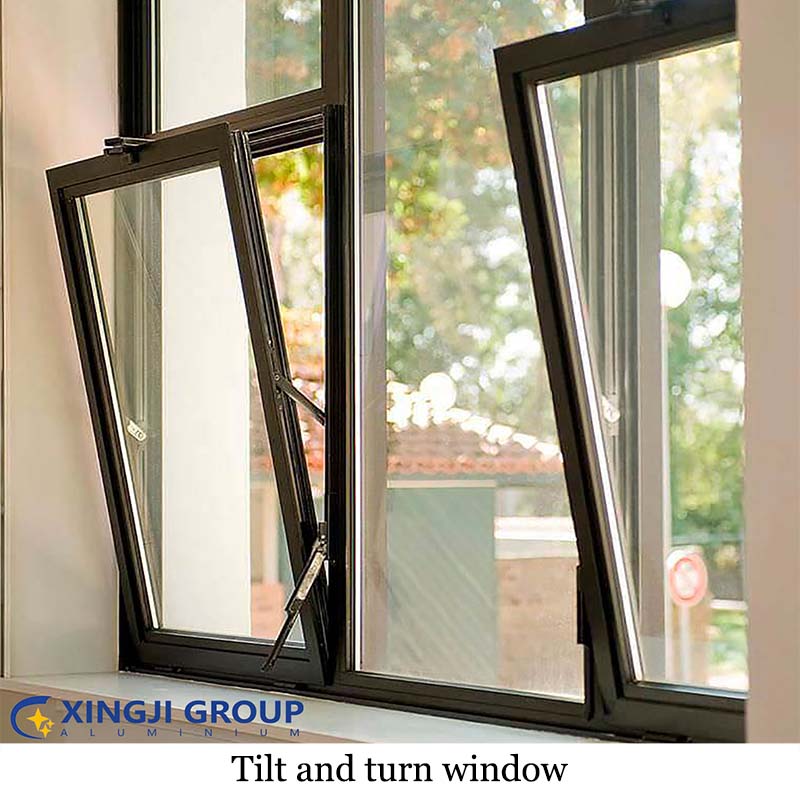
Material & Process Economics:
Base Alloy Requirements: High-quality black anodized aluminum windows often require specific aluminum alloy grades (e.g., 6060, 6063) with tightly controlled compositions to achieve a flawless anodized finish, potentially costing more than alloys commonly used for powder-coated white aluminum windows or grey aluminum windows.
Logistics & Handling Sensitivity: The pristine finish of black anodized aluminum windows is highly susceptible to visible scratches and fingerprints. This demands significantly more meticulous packaging, handling protocols, and storage conditions throughout the supply chain compared to the more forgiving surfaces of white aluminum windows and grey aluminum windows, adding logistical expense.
II. Value Beyond Initial Cost: Comparing Black Anodized, White, and Grey Aluminum Windows
While black anodized aluminum windows typically carry a 15-30% premium over equivalent white aluminum windows, and a 10-20% premium over grey aluminum windows, evaluating their total value proposition is essential:
Aesthetic Power & Property Value:
Black Anodized: Offers an unparalleled, sleek, contemporary statement. The metallic sheen and depth of black anodized aluminum windows create dramatic contrast and timeless sophistication, often significantly boosting curb appeal and perceived property value.
White Aluminum Windows: Provide a classic, bright, clean aesthetic. Ideal for traditional styles, coastal homes, or creating an airy feel, white aluminum windows remain a popular, safe choice.
Grey Aluminum Windows: Emerge as a versatile middle ground. Offering modern subtlety without the boldness of black, grey aluminum windows complement a wide range of materials and color palettes, from cool to warm tones, providing contemporary elegance.
Durability & Long-Term Performance:
Black Anodized Aluminum Windows: The anodized layer is incredibly hard, highly resistant to scratching, corrosion, and UV degradation. It’s integral to the metal, meaning it won’t peel or chip. While high-quality powder coats on white aluminum windows and grey aluminum windows are durable, anodizing generally offers superior inherent resilience, especially in harsh environments.
Maintenance & Appearance: Black anodized aluminum windows excel at hiding dust and water spots compared to white aluminum windows, which readily show dirt and can develop a yellowish tinge over decades. Grey aluminum windows also perform well in hiding dirt, sitting between black and white. The metallic finish of anodized black maintains its luster exceptionally well.
Design Versatility & Timelessness:
Black Anodized: Represents a strong, enduring modern neutral. It pairs dramatically with light exteriors (render, stone) and adds depth to darker facades. Its timeless appeal transcends fleeting trends.
White Aluminum Windows: Offer a perennial classic, brightening facades and suiting numerous architectural styles, though bright white trends can fluctuate.
Grey Aluminum Windows: Provide remarkable flexibility. From light silvers to deep charcoals, grey aluminum windows can adapt to both contemporary and traditional settings, offering a modern update that avoids the starkness of white or the intensity of black.
III. Making the Optimal Choice: Key Considerations for Black, White, or Grey
Selecting between black anodized aluminum windows, white aluminum windows, or grey aluminum windows involves factors beyond upfront cost:
Architectural Harmony & Vision: Does the bold, high-tech look of black anodized aluminum windows align with your design? Does the crispness of white aluminum windows suit a traditional aesthetic? Or does the adaptable sophistication of grey aluminum windows provide the perfect balance? Prioritize the aesthetic that enhances your property’s character.
The Imperative of Quality:
For Black Anodized: Demand Class I or Class II anodizing (typically 20-25 microns thick) for optimal durability and color consistency. Verify the supplier’s expertise in anodizing and their quality guarantees.
For White & Grey Aluminum Windows: Specify premium super-durable polyester, polyurethane, or PVDF (Kynar 500®/Hylar 5000®) powder coatings. Ensure robust warranties against fading and chalking (e.g., Qualicoat Class 3 or GSB Master).
Thermal Performance: Regardless of color, insist on high-quality thermal breaks. The increased solar gain of black anodized aluminum windows makes this particularly crucial. Ensure all systems – white aluminum windows, grey aluminum windows, and black – are engineered for your climate.
Climate & Orientation:
In very hot, sunny climates, discuss thermal expansion management strategies for black anodized aluminum windows with your supplier. The solar heat gain can be beneficial in colder climates.
White aluminum windows are optimal for heat reflection in hot regions.
Grey aluminum windows offer a balanced thermal performance profile.
Long-Term Value Assessment: Factor in the enhanced curb appeal, potential property value uplift, exceptional durability, and lower perceived maintenance (especially for black and grey) when evaluating the investment in black anodized aluminum windows or premium grey aluminum windows versus white aluminum windows. The cost difference, amortized over decades, often justifies the premium for the desired aesthetic and performance.

Investing in Lasting Impact and Performance
Yes, black anodized aluminum windows generally cost more upfront than white aluminum windows or grey aluminum windows, reflecting the complexities of the anodizing process, material requirements, and necessary engineering for thermal performance. However, focusing solely on initial price overlooks the compelling value equation.
Black anodized aluminum windows deliver unmatched contemporary aesthetics, superior inherent durability, excellent dirt-hiding properties, and a timeless appeal that can significantly elevate property value. White aluminum windows remain a cost-effective, classic choice offering brightness and tradition. Grey aluminum windows present a versatile, modern alternative with strong aesthetic flexibility and good practicality.
As your dedicated aluminum fenestration partner, we emphasize that choosing high-quality black anodized aluminum windows, white aluminum windows, or grey aluminum windows is an investment in your property’s long-term beauty, performance, and value. When sourced from a manufacturer committed to excellence in materials, engineering, and finish quality – whether anodized or powder-coated – the premium for black anodized aluminum windows or specific shades of grey aluminum windows translates into a distinct architectural statement and enduring satisfaction.
Define your vision with the perfect hue: the bold statement of black anodized, the timeless clarity of white, or the sophisticated versatility of grey. Invest in quality that endures.

